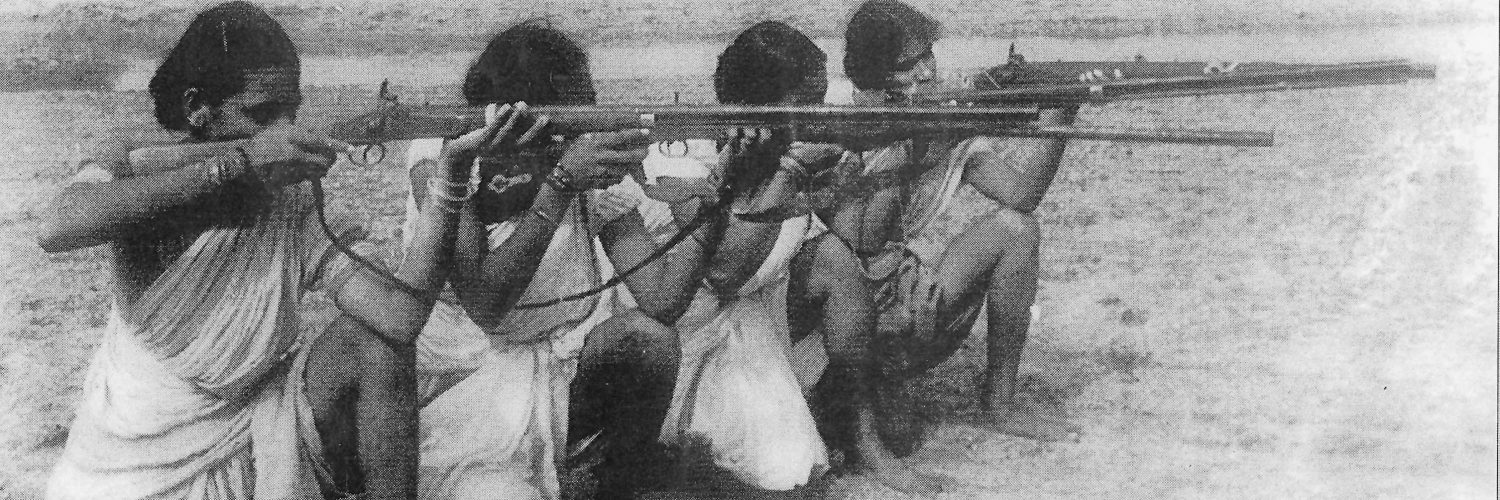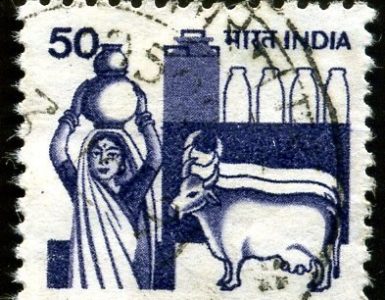Sanjay Seth
After graduating from the University of Sydney in the early 1980s, I chose to pursue my PhD studies at the Australian National University (ANU), because – somewhat surprisingly – the ANU, located in the small capital city of Canberra, was at that time, arguably, one of best places to be for the study of Indian history. Anthony Low, the well-known historian of South Asia and Africa, was Vice-Chancellor of the university, and had put energy and resources into encouraging the study of South Asian history.
Ranajit Guha was the centre of this, and he, along with the well-known Australian philosopher Eugene Kamenka, became my PhD supervisor. Two of his other PhD students, Raghab Chattopadhyaya and Kamal Ahmed, and Dipesh Chakrabarty (who was finishing his PhD, and was Anthony Low’s student) often joined me in conversations with Ranajit – Ranajit tended not to have formal supervisory sessions but rather to have conversations, where he threw out an array of unfamiliar ideas and insights which we would subsequently discuss for hours over endless cups of (bad) coffee.
A stream of subalternists came through as visiting scholars, including Partha Chatterjee and Sumit Sarkar – I mention these two in particular because when I was in India working at various archives Sumit was my supervisor, and when I went to Calcutta I had some enlightening conversations with Partha. My PhD dissertation, later published as Marxist Theory and Nationalist Politics: The Case of Colonial India, bore the imprint of all these teachers and colleagues.
These details are by way of setting the scene, for my aim in this brief essay is not to reminisce, but to indicate how Ranajit’s work on Indian history influenced me – what I learned, as it were.
When I first arrived at the ANU, it was, as I remember it, at the tail end of an explosion of studies of the peasantry in the Third World, and also of the ‘modes of production’ debate. Alongside my readings in German idealism, Marxism, and structuralism, I immersed myself in some of these debates. These were fascinating, but it soon struck my then-youthful self that what was missing, or at least partially missing from these debates, was the question of power. Peasant studies often resulted in increasingly fine distinctions between middle, upper middle, and lower middle peasants, while the modes of production debates seemed to me to have forgotten the reason they were worth having – struggle had receded into the background, and a certain scholasticism crept in.
Reading Ranajit’s opening essay in Subaltern Studies 1, and even more so his Elementary Aspects of Peasant Insurgency, was the corrective or antidote I was searching for, for here the question of power was an organising concept. The very category of ‘subaltern classes’, borrowed from Gramsci, dispensed with fine gradations – as Ranajit explained in his opening statement in Subaltern Studies I, “The social groups and elements included in this category represent the demographic difference between the total Indian population and all those whom we have described as the ‘elite’.” This was not, of course, because he was unaware that both categories were heterogenous, but rather because he was seeking to highlight that notwithstanding the undoubted differences, divisions and forms of ‘internal’ exploitation between landless peasants, middle peasants and so on, the fundamental dividing line was not about size of landholding but of relations of domination and subordination.
This, according to Ranajit, was manifested most clearly in the course of peasant jacqueries, the subject of his brilliant Elementary Aspects of Peasant Insurgency. These rebellions usually aimed not simply to expropriate property, but to reverse relations of domination and subordination, to ‘turn the world upside down’. This was because the power relations they challenged were not of the bourgeois type, ones marked by formal equality, but rather inscribed in the naked use of force, in dress, in language and bodily comportment, all parts of an elaborate semiotics of power.
Peasant rebellions were thus marked by what Ranajit described and analysed as ‘negation’, a consequence of the fact that the peasant’s “identity amounted to the sum of his subalternity…he learnt to recognise himself not by the property and attributes of his own social being but by a diminution, if not negation, of those of his superiors.” Hence why inversion was the principal modality of peasant rebellion- “a political struggle in which the rebel appropriated and/or destroyed the insignia of his enemy’s power and hoped thus to abolish the marks of his own subalternity…a project which was, by its very nature, negatively constituted.”
After the appearance of Elementary Aspects and the first few volumes of SS, it was often commented that this was an ‘application’ to India of the ‘history from below’ pioneered by brilliant historians like EP Thompson, George Rudé and Eric Hobsbawm. What this missed, however, was that the histories of Rudé and Hobsbawm characterised their subjects as ‘backward’, and their forms of protest and rebellion as ‘prepolitical’. Hobsbawm and Rudé were not seeking to diminish the struggles of those whom they were studying – the very fact that they sought to recover these struggles indicated otherwise – but this judgment reflected their view that by the standards of the sorts of struggles that occur on the grounds of bourgeois society, these earlier ones were undertaken by people who were not in a position to develop forms of militant organisation, or envision an alternative social order.
Early in Elementary Aspects, Ranajit writes that while this may be so for Europe, “the notion of pre-political peasant insurgency helps little in understanding the experience of colonial India.” In the course of the book, two reasons why this is so emerge – reasons that are in tension with each other. The first refers back to what I mentioned above – in a pre or non-bourgeois society where surplus extraction is not effected through the wage-labour capital relation, but through domination and subordination anchored in multiple points and effected through multiple means, including violence, any revolt was ipso facto political – there was simply no possibility of gradualism or ‘economism’. Important a point as this was, it lent itself to the reading that peasant revolt in India was political because of Indian ‘backwardness’, because India was ‘feudal’.
The other reading, at odds with the first, was that peasant revolts in colonial India were ‘political’ not because of Indian backwardness, feudalism or premodernity, but on the contrary, because in colonial and post-Independence India the dominance of capital had not also resulted in the dominance of bourgeois society and culture. As Ranajit put it in SSI, subaltern politics “was traditional only insofar as its roots could be traced back to pre-colonial times, but it was by no means archaic in the sense of being outmoded;” it was, in fact, “as modern as elite politics.”
In a later summation of Ranajit’s position, in “A Small History of Subaltern Studies,” Dipesh Chakrabarty wrote, “the global history of capitalism need not reproduce everywhere the same history of power. In the calculus of modernity, power is not a dependent variable and capital an independent one.” What Ranajit was signalling towards, in other words, was that colonial India was modern rather than premodern, but that this had not been accompanied by the sorts of transformations in the relations of power and politics that had (arguably) accompanied the dominance of capital in Europe.
If, for example (to paraphrase Marx) it was a feature of bourgeois society that formal political equality acquired the force of a fixed prejudice, this – and many other features thought to characterise bourgeois society – were not typical of India in the nineteenth or twentieth centuries. And that is why Ranajit ends Elementary Aspects with a rhetorical flourish, claiming that the consciousness that had informed peasant insurgency in nineteenth century India extended into the twentieth, such that “Many of the mass movements which have swept through our land since then bear at least some of its hallmarks,” and, “No jacquerie in the countryside, no street riot in our towns is an exception.” This is the core idea underpinning his Dominance without Hegemony – that colonial capitalism and the colonial state integrated India into global capital and modern forms of statehood, but without establishing a hegemonic bourgeois culture.
Scholarship on India (and on much of the non-Western world) has usually been marked by a teleology in which the future of India can be seen in the present of Europe. The evident differences of India or other non-Western locations can then, even where they are recognized and attended to, be seen as marks of an incomplete ‘transition’, and the search begins for what the causes and remedies of that incomplete transition might be.
Writing the history of the non-West was thus often a search for its ‘lacks’ and its shortcomings, and descriptions of how far it had proceeded in its ‘transition’ to where the West had already arrived, all this in keeping with the premise that what had first happened in the West would eventually reshape the Rest. The result was often, as Achille Mbembe puts it of studies of Africa in On the Postcolony, “while we feel we now know nearly everything that African states, societies and economies are not, we still know nothing about what they actually are.”
Ranajit and many of his collaborators in SS rejected this, not out of nationalist self-assertion, but on the grounds that some of the most striking features of colonial and post-Independence India are not marks of the as-yet incomplete victory of capital, but in some cases constitute a structural feature of capital and modernity in India. Subsequent work by other subalternists, including but not limited to Dipesh Chakrabarty’s work on the Calcutta working class and Partha Chatterjee’s work on the peasantry, and in more recent times his Politics of the Governed, have started from this presumption. So too – and not necessarily because of the influence of Ranajit or SS – with other works I admire, including those of Saba Mahmood and Charles Hirschkind on Egypt.
All of these start not by taking western modernity as the norm and measuring Indian (or Egyptian, etc) distance from it, but by examining the manifold ways in which the self-expansion of capital and the governmentalized state are now an integral part of everyday life and politics in many parts of the Global South, but without a corresponding effacement of forms of hierarchy, affect and mobilization that do not take their ground and point of departure from bourgeois culture. If we recognise that the non-West is not at an earlier point in the arc of western historical development, it follows that we must also recognise that making sense of it may require modifying or abandoning some of our conceptual vocabulary, which was born in the course of making sense of European history, and inventing new categories of analysis – as I argue in my recent book, Beyond Reason: Postcolonial Theory and the Social Sciences.
The non-West has for a very long time been regarded as different from the western world. But the ‘difference’ Ranajit and the SS scholars drew attention to was not an essentialist, ontological, and racist difference – ‘East is East and West is West, and never the twain shall meet’. Nor was it the ‘difference’ recognized by stadial theories of historical development, according to which the non-Western world is at an earlier and lesser stage of ‘modernization’ and Enlightenment. They suggested instead that these two unpalatable choices may not exhaust our intellectual options, and made it possible to recognise that the non-West is different not because it is ‘not yet’ modern and fully rational, but that the globalization of capital and modernity has not effaced difference, and also that what we have taken to be Reason is but a historically and culturally specific way of conceiving of, understanding and inhabiting the world, rather than the ‘correct’ way finally discovered.
The spread of capitalism, for which colonialism was one of the main mechanisms, did indeed transform the non-Western world in many ways: but forms of thinking, living and conceiving of collective life that do not accord with Western modernity have not always been consigned to the dustbin of history. It is necessary, then, to study the non-West not as an earlier form of what the West was, but rather as something that embodies ways of life and thought that are part of the modern but without necessarily being like the Western forms of modernity. Ranajit’s work and the work of his fellow subalternists was not the only road to this realisation, of course; but for me it was critical, and it influenced my subsequent intellectual trajectory.
References
Chakrabarty, Dipesh, “A Small History of Subaltern Studies,” in his Habitations of Modernity (Chicago: University of Chicago Press, 2002).
Guha, Ranajit. Elementary Aspects of Peasant Insurgency in Colonial India (Delhi: Oxford University Press, 1983).
Guha, Ranajit, “On Some Aspects of the Historiography of Colonial India,” in Guha (ed), Subaltern Studies I (Delhi: Oxford University Press, 1982).
Guha, Ranajit, Dominance Without Hegemony: History and Power in Colonial India (Harvard University Press, 1998).
Mbembe, Achille, On the Postcolony (Berkeley: University of California Press, 2001).
Seth, Sanjay, Beyond Reason: Postcolonial Theory and the Social Sciences (NY: Oxford University Press, 2021).

Sanjay Seth is Professor of Politics and Director of the Centre for Postcolonial Studies at Goldsmiths, University of London. He has written extensively on modern Indian history, postcolonial theory and international relations. His most recent books are Beyond Reason: Postcolonial Theory and the Social Sciences (Oxford University Press, 2021) and História e Pós-colonialismo (Imprensa de História Contemporânea, 2022).
Header Image Credit: Wikimedia Commons (public domain)
TO CITE THIS ARTICLE:
Seth, Sanjay 2024. ‘Guha, Indian History, and me’ Discover Society: New Series 4 (1): https://doi.org/10.51428/Dsoc.2024.01.0004




